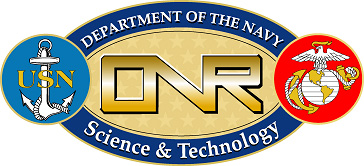POTENTIAL
APPLICATIONS
Automated
microlayer sampling with SCIMS combined with ion trap mass
spectrometry provides the capability to examine the molecular
identity and concentrations of organic compounds in the sea
surface microlayer and to make better estimates of surface
elasticity. The availability of such information during field
studies will allow more detailed investigations of air-sea
interactions and improved groundtruthing of microwave remote
imagery. More rapid information acquisition will allow process
studies of links between biological processes, surfactant
production and film distributions, the role of hydrodynamic
processes in film formation and dispersal, photochemical degradation
processes in the microlayer, and the relative importance of
insoluble lipid and soluble biopolymeric surfactants in determining
sea surface viscoelasticity. Expected major applications include
studies of the role of the marine microlayer in modulating
small-scale waves and microwave scattering, microwave signatures
of internal waves, wind stress-drag relationships, turbulent
surface renewal and air-sea gas exchange.
REFERENCES CITED
Carlson, D. J., L. Cantey and J. J.
Cullen (1988), Deep-Sea. Res., 35, 1205-1213.
Cinbis, C. (1992), Doctoral Dissertation, Stanford University,
E. L. Ginzton Laboratory Report No. 4931.
Frew, N. M. (1997), In The Sea Surface and Global Change,
Liss and Duce (eds), Cambridge University Press, pp. 121-172.
Frew, N. M., R. K. Nelson, E. J. Bock, W. R. McGillis, J.
B. Edson and T. Hara (2001), In Gas Transfer at Water Surfaces,
Donelan, Saltzman, Wanninkhof and Drennan (eds), AGU Monograph
Series, Vol. 27, AGU Press, pp. 153-159.
Levich, V. G. (1962), Physico-Chemical Hydrodynamics. Prentice-Hall
International: Englewood Cliffs, NJ.
ACKNOWLEDGMENTS
This research has been supported by
the National Science Foundation (OCE-9811279) and by the Office
of Naval Research (Biological and Chemical Oceanography (N000149810593)).
 |
 |
|

